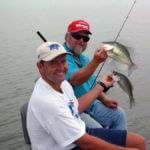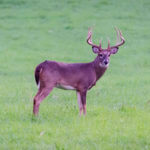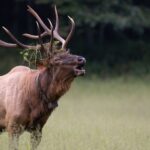Editor’s Note: I love to hear the call of the sirens like the Greeks of old, even if the sirens aren’t scantily-clad beautiful mermaids but instead have big, heavy, massive antlers and thick, brown coats. Today elk – majestic animals once thought to be only in the West – have returned home to the East. One source of good news in this COVID world is that elk weighing 800 pounds, standing 5 feet tall at the
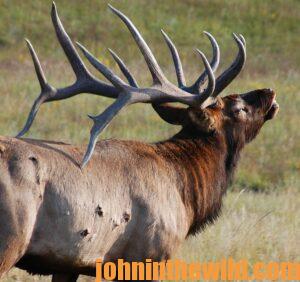
shoulder and having a length of 8 feet have come home once again to some eastern states. Today you can hear the mystical, melodic, piercing, high-pitched bull elk bugles in some of their historical habitat. Thanks to the efforts of state departments of conservation, interested landowners and the Rocky Mountain Elk Foundation (https://www.rmef.org/), 11 eastern states, including: Minnesota, Wisconsin, Michigan, Pennsylvania, West Virginia, North Carolina, Kentucky, Tennessee, Missouri, Virginia and Arkansas, have had their elk restocked, and the herds are thriving. Several states even offer limited hunting opportunities for elk. Prior to European settlement, more than 10-million elk roamed nearly all of the U.S. and parts of Canada. Today that number totals about 1 million. By the 1840s to the 1870s, most of the elk east of the Mississippi River had been killed for food and hides that could be sold for other essentials by frontier settlers. For many years, finding, seeing or hearing an elk in the East was impossible.
Where to See Elk
- Land Between the Lakes in Golden Pond, Kentucky
- Arkansas highways 43 and 21 in the Boxley Valley, the Erbie Campground on the Buffalo River, roads leading east and west from the Pruitt Bridge in Pruitt, the Carver Bridge and the Gene Rush WMA, the Bearcat Hollow WMA and Richland Valley all home elk (https://landbetweenthelakes.us/seendo/attractions/elk-bison-prairie/) is one of my personal favorites to see big elk, with the best viewing times being early morning and late afternoon. You can watch newly-born elk calves with their mothers during late May or June, and throughout September and October, you can hear elk bugling. On this same range, you’ll see herds of wild buffalo too. Nearby Kentucky Dam Village State Resort Park offers places to stay and camp (https://stateparks.com/kentucky_dam_village_state_park_in_kentucky.html) (https://sightdoing.net/where-to-see-elk-in-arkansas/).
- Cataloochee Valley in North Carolina in the Smoky Mountains is another of my favorite spots to watch elk that aren’t afraid of humans (https://www.nps.gov/grsm/learn/nature/elk.htm). Also, check-out the fields next to U.S. 441 in the park and spots in Cherokee, N.C.
- You can search for places online to view elk and to learn more about where you can see them, including: Michigan’s Pigeon River Country State Forest near Gaylord; Minnesota’s Skull Lake WMA, Thief Lake WMA and Agassiz National Wildlife Refuge; Missouri’s Peck Ranch Conservation Area and the lands between Eminence, Van Buren and Ellington; Pennsylvania’s town of Benezette, considered the heart of elk country; Virginia’s Southern Gap Outdoor Adventure Center; and West Virginia’s Chief Logan Lodge.

Where You Can Learn about Elk
Once again, you can check the internet for places to learn about elk.
- Arkansas homes: the Ponca Elk Education Center in Ponca (https://www.arkansas.com/ponca/ponca-elk-education-center) with full-body elk mounts, hands-on displays with hides, skulls and other artifacts and interactive computer quizzes; and the Hilary Jones Wildlife Museum and Elk Information Center in Jasper, features exhibits and video presentations (https://www.arkansas.com/jasper/attractions-culture/hilary-jones-wildlife-museum-elk-information-center).
- Pennsylvania has eight visitors’ centers and elk-viewing areas – some offering guided tours (https://www.visitpa.com/region/pennsylvania-wilds/elk-county-visitors-center).
- West Virginia’s Chief Logan Lodge conducts guided tours that include transportation, food and interpretative presentations (https://wvstateparks.com/things-to-do/elk-management-tours/).
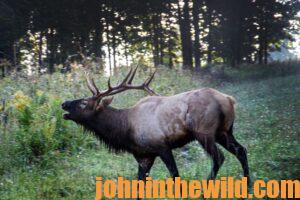
What Elk Need
Elk must have abundant, quality habitat – food, water, shelter and places to roam. The Rocky Mountain Elk Foundation’s Managed Lands Initiative since 1984 has protected and enhanced more than 7.9 million acres across the U.S. to benefit elk. In 2019, the latest data available shows that the RMEF and its partners carried out conservation projects enhancing 404,164 acres of elk habitat in 23 states to aid wild, free-ranging elk. These projects have included prescribed burning, reclaiming strip-mined lands, creating dependable water, thinnings and removing some bushes and trees that choke out forage for elk and protecting lands.
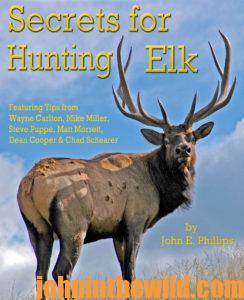 To learn more about hunting elk successfully, check out John E. Phillips’ book, “Secrets for Hunting Elk,” available in Kindle and Audible at https://www.amazon.com/gp/product/B008KQA40W/ref=dbs_a_def_rwt_hsch_vapi_tkin_p1_i5.You may have to copy and paste this click into your browser. (When you click on this book, notice on the left where Amazon allows you to hear 10% of the book for free). On the right side of the page and below the offer for a free Audible trial, you can click on Buy the Audible with one click.
To learn more about hunting elk successfully, check out John E. Phillips’ book, “Secrets for Hunting Elk,” available in Kindle and Audible at https://www.amazon.com/gp/product/B008KQA40W/ref=dbs_a_def_rwt_hsch_vapi_tkin_p1_i5.You may have to copy and paste this click into your browser. (When you click on this book, notice on the left where Amazon allows you to hear 10% of the book for free). On the right side of the page and below the offer for a free Audible trial, you can click on Buy the Audible with one click.





